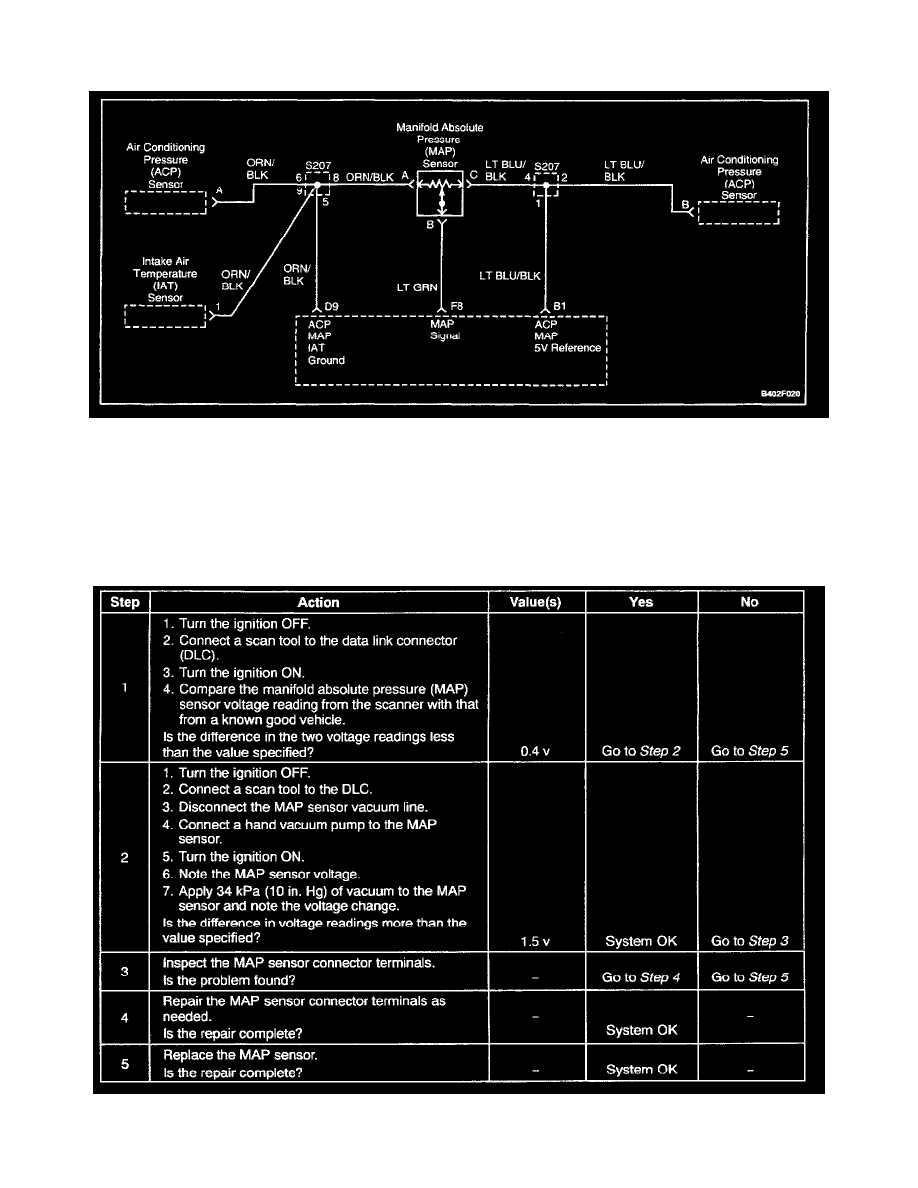Nubira SX Hatchback L4-2.0L DOHC D-TEC MFI (1999)

Manifold Absolute Pressure (MAP) Sensor: Testing and Inspection
MANIFOLD ABSOLUTE PRESSURE CHECK
Circuit Description
The manifold absolute pressure (MAP) sensor measures the changes in the intake manifold pressure which result from engine load (intake manifold
vacuum) and rpm changes. The MAP sensor converts these changes into a voltage output. The powertrain control module (PCM)/engine control module
(ECM) sends a 5-volt reference voltage to the MAP sensor. As the intake manifold pressure changes, the output voltage of the MAP sensor also changes.
A low voltage (high vacuum) output of 1 to 2 volts is present at idle. A high voltage (low vacuum) output of 4.0 to 4.8 volts is present at wide open
throttle. The MAP sensor is also used under certain conditions to measure baro-metric pressure. This allows the PCM/ECM to make adjustments for
altitude changes. The PCM/ECM uses the MAP sensor for fuel delivery and ignition timing changes.
Steps 1 To 5
